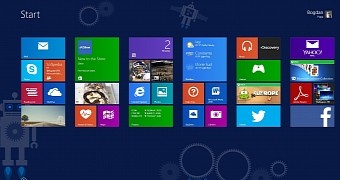Windows 8 was launched on October 26, 2012 to breathe life into Microsoft’s desktop operating system and give the software giant a chance in the tablet industry, but contrary to what the Softies expected, success on the short term was terrible.
Despite Microsoft’s praises, Windows 8 performed well below expectations and although company executives have always refused to say it loud and clear, this new experiment more or less proved to be very similar to Windows Vista, which in its turn was often referred to as Microsoft’s biggest OS fail.
But comparing Windows 8 to Windows Vista has become more of a cliché, so we won’t do that today. Instead, we’re going to ask you one big question that could help us determine whether Microsoft played its card wrong or Windows 8 actually never had a chance to succeed:
Would you give up on your existing Windows version and install Windows 8 if it were free?
Right now, Microsoft is hard at work on one of the most significant changes in its OS strategy since Windows was first brought to life in the ‘90s, as it plans to offer Windows 10 free of charge to those currently running Windows 7 or Windows 8.1.
For starters, this would be the first time when Microsoft is offering a new Windows version free of charge. With Windows 8, the company indeed rolled out some discounts to convince more users to upgrade, but the modern OS has never been up for grabs at no cost.
Back in October 2012 when Microsoft rolled out Windows 8, the new OS could be purchased by Windows 7 users for only $15 (11 euros). The promo lasted for three months and was supposed to encourage as many users as possible to try the new Windows 8. The result? Windows 8 barely achieved a 3 to 4 percent market share after this special offer.
Afterwards, the modern platform could only be purchased at the full price of $119.99 (90 euros) for the core version and $199.99 (150 euros) for the Pro package. Undoubtedly, Windows 8 has never been an affordable operating system, but surprisingly, its high price was never touted as one of the reasons for holding back the update.
Instead, the majority of users pointed to Windows 8’s performance, lack of a Start menu, Modern UI, and increased focused for touch-optimized features as the main reasons for staying on Windows 7, with pricing becoming a much less important factor that convinced users to stick to their current OS version.
Experimenting without paying anything
But despite all of these, what if Windows 8 was completely free of charge? What if instead of paying more than 100 bucks for a new operating system, you were allowed to get it at absolutely no charge and try out the new Start screen, the new touch-optimized UI called Metro, the new Store, the new Charms bar, and the new flat UI without spending a single cent?
Offering Windows 8 free of charge could have been one of the best ways to boost early adoption of the modern operating system, but nobody, not even Microsoft, expected its new software to have such terrible performance. The software giant somehow tried to improve things a little bit with the Windows 8.1 update, obviously offering it free of charge for Windows 8 users, but you still had to pay for the core operating system to get it.
These days, only some 15 percent of the world’s PCs are running Windows 8.1 and Windows 8, which is clearly a sign that Microsoft failed to deliver what customers expected in terms of looks, performance, and usability. But as far as pricing is concerned, this has never been a problem for those who criticized Windows 8. So how important is actually a free license?
How many of you think that Windows 8 would have had a different fate if it had been free?

 14 DAY TRIAL //
14 DAY TRIAL //